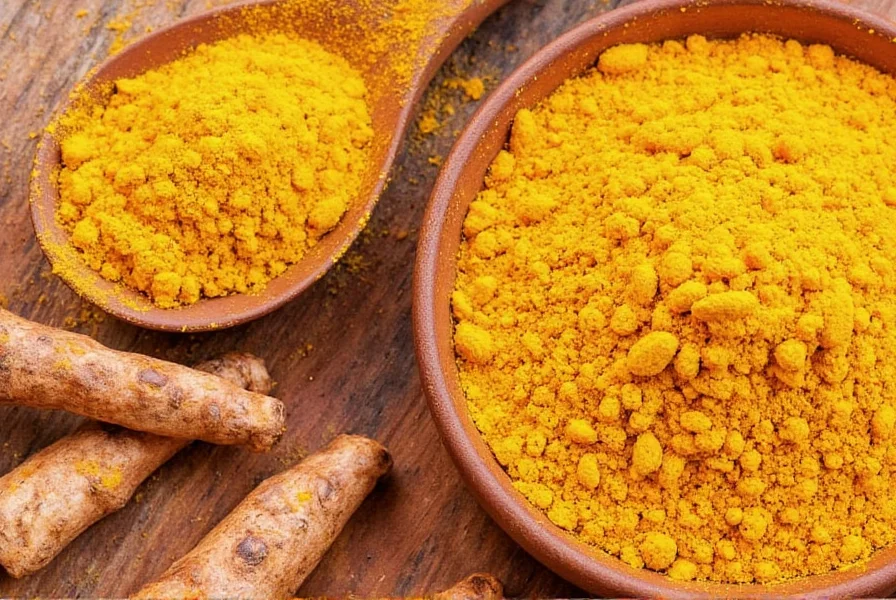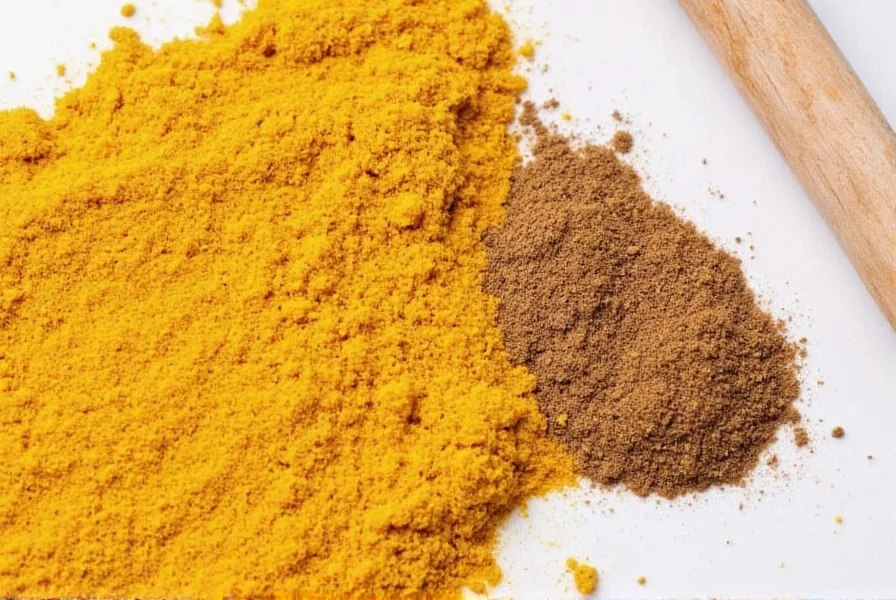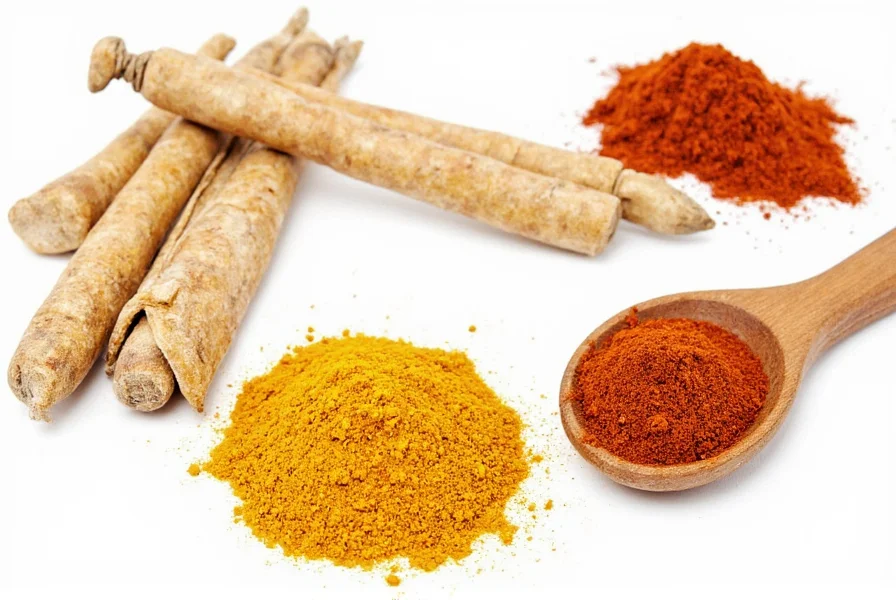When turmeric isn't available or suitable for your needs, finding the right spice substitute becomes essential for maintaining both flavor and visual appeal in your dishes. Whether you're out of turmeric, dealing with allergies, avoiding curcumin interactions with medications, or simply seeking alternative flavor profiles, understanding your substitution options ensures your culinary creations remain successful.
Why You Might Need a Turmeric Substitute
Turmeric, with its distinctive golden color and earthy flavor, plays multiple roles in cooking and wellness routines. Common reasons for seeking alternatives include:
- Unavailability - Running out of turmeric mid-recipe
- Allergies or sensitivities - Some individuals experience digestive discomfort
- Medication interactions - Turmeric can interfere with blood thinners
- Budget considerations - Saffron offers similar color but at different price points
- Dietary restrictions - Following specific protocols that exclude turmeric
Top Turmeric Substitutes Analyzed
Saffron: The Premium Color Substitute
When vibrant yellow color is your primary concern, saffron serves as turmeric's most effective visual replacement. This expensive spice delivers a similar golden hue without overpowering other flavors. Use saffron threads steeped in warm liquid (¼ teaspoon threads replaces 1 teaspoon turmeric). While saffron lacks turmeric's earthy notes, it adds subtle floral complexity. Best for rice dishes, seafood preparations, and sauces where color matters most. This turmeric replacement for golden milk works when you steep the threads properly.

Ginger: The Flavor-Focused Alternative
For recipes where turmeric's flavor matters more than its color, ginger provides the closest taste profile. Fresh ginger (¼ cup grated replaces 1 teaspoon turmeric powder) offers similar earthy warmth with additional zing. Dried ginger works too but requires adjustment (½ teaspoon dried ginger replaces 1 teaspoon turmeric). The best substitute for turmeric in curry when you prioritize flavor over color, ginger shines in stir-fries, marinades, and soups. Note that ginger lacks curcumin's anti-inflammatory properties, making it less suitable as a turmeric substitute for inflammation purposes.
Curry Powder: The Convenient Blend
When turmeric is unavailable but curry powder sits in your pantry, this blend offers a practical solution. Most curry powders contain turmeric as a primary ingredient (typically 25-30% of the blend). Use 1½ teaspoons curry powder to replace 1 teaspoon turmeric, reducing other spices accordingly. This works well as a turmeric replacement in Indian dishes and stews. Be aware that curry powder introduces additional flavors like cumin and coriander that alter your recipe's profile. Not ideal for golden milk or medicinal applications where pure turmeric compounds matter.
Specialized Substitutes for Specific Needs
| Substitute | Best For | Substitution Ratio | Limitations |
|---|---|---|---|
| Saffron | Color-focused applications | ¼ tsp threads = 1 tsp turmeric | Expensive, subtle flavor difference |
| Ginger | Flavor-focused applications | ¼ cup fresh = 1 tsp turmeric | No yellow color, different health properties |
| Annatto | Color without flavor change | ½ tsp seeds = 1 tsp turmeric | No earthy flavor, limited availability |
| Paprika | Mild color and flavor replacement | 1 tsp sweet paprika = 1 tsp turmeric | Reddish hue, milder flavor |
| Mustard powder | Color in dry rubs and sauces | 1 tsp = 1 tsp turmeric | Strong flavor, not for all applications |
Annatto: The Neutral Color Agent
Annatto seeds provide vibrant yellow-orange color without significantly altering flavor—making them ideal when you need a turmeric substitute without changing taste. Soak ½ teaspoon annatto seeds in 2 tablespoons warm oil for 10 minutes, then strain (replaces 1 teaspoon turmeric). This works particularly well in rice dishes, cheeses, and processed foods where turmeric's flavor would be overpowering. Unlike turmeric, annatto doesn't offer significant anti-inflammatory benefits, so it's not suitable as a turmeric substitute for health purposes.
Paprika: The Accessible Alternative
Sweet paprika serves as the most accessible turmeric replacement for most home cooks. While it produces a slightly redder hue than turmeric's golden yellow, it provides similar earthy notes without bitterness. Use equal parts paprika to replace turmeric in soups, stews, and roasted vegetables. Hungarian sweet paprika works best for this purpose. This substitute shines when creating dishes where exact color matters less than overall flavor balance. For those seeking spices that look like turmeric in everyday cooking, paprika offers the most practical solution.

Special Considerations for Health Applications
When substituting turmeric for medicinal purposes, the considerations differ significantly from culinary applications. Turmeric's primary active compound, curcumin, provides most of its celebrated health benefits. None of the culinary substitutes offer equivalent curcumin levels, making them ineffective as direct health replacements. For inflammation management, consult your healthcare provider about alternatives like ginger (which has different anti-inflammatory compounds) or specialized supplements. This distinction matters most when considering what to use instead of turmeric for inflammation specifically.
Making the Right Choice for Your Needs
Selecting the ideal turmeric substitute depends entirely on your specific requirements:
- For color: Choose saffron or annatto
- For flavor: Opt for ginger or curry powder
- For budget cooking: Use paprika or mustard powder
- For health applications: Consult a healthcare professional
When substituting in recipes, always consider the dish's other ingredients and cooking method. Acidic components like tomatoes can affect color outcomes, while prolonged cooking may diminish certain spice properties. The best approach involves small test batches when experimenting with new substitutions.
Frequently Asked Questions
Can I use paprika instead of turmeric in curry?
Yes, you can substitute paprika for turmeric in curry at a 1:1 ratio, but expect a slightly redder color and milder flavor. Sweet paprika works best for this purpose. The substitution works well in tomato-based curries where the color difference becomes less noticeable, though the earthy depth of turmeric will be somewhat diminished.
What's the best turmeric substitute for golden milk?
Saffron makes the best turmeric replacement for golden milk when properly steeped. Use ¼ teaspoon saffron threads steeped in warm milk for 10 minutes to replace ½ teaspoon turmeric. This provides the signature golden color without altering the beverage's soothing properties. For a more budget-friendly option, a combination of annatto and a small amount of ginger can approximate both color and flavor.
Does ginger have the same health benefits as turmeric?
No, ginger and turmeric have different bioactive compounds and health profiles. While both offer anti-inflammatory properties, turmeric's curcumin works differently than ginger's gingerols. Ginger excels at digestive support and nausea relief, while turmeric shows stronger evidence for joint health. Neither serves as a complete health substitute for the other, making ginger an inappropriate turmeric substitute for inflammation-specific therapeutic purposes.
Can I make my own curry powder as a turmeric substitute?
Yes, you can create a simple curry powder blend to substitute for turmeric by combining 2 parts coriander, 1 part cumin, ½ part turmeric (if available), ½ part fenugreek, and¼ part each of black pepper, cinnamon, and cardamom. Without turmeric, increase the other spices proportionally. This blend works as a turmeric replacement in recipes at a 1½:1 ratio (1½ teaspoons curry powder replaces 1 teaspoon turmeric).
Which turmeric substitute works best for coloring cheese?
Annatto is the preferred turmeric substitute for cheese coloring in both commercial and home cheese-making. Use ½ teaspoon annatto seeds steeped in 2 tablespoons warm milk or oil to replace 1 teaspoon turmeric. This provides the characteristic yellow-orange hue without affecting flavor, making it ideal for cheddar, colby, and other colored cheeses. Unlike turmeric, annatto won't impart any earthy notes to your cheese.











 浙公网安备
33010002000092号
浙公网安备
33010002000092号 浙B2-20120091-4
浙B2-20120091-4